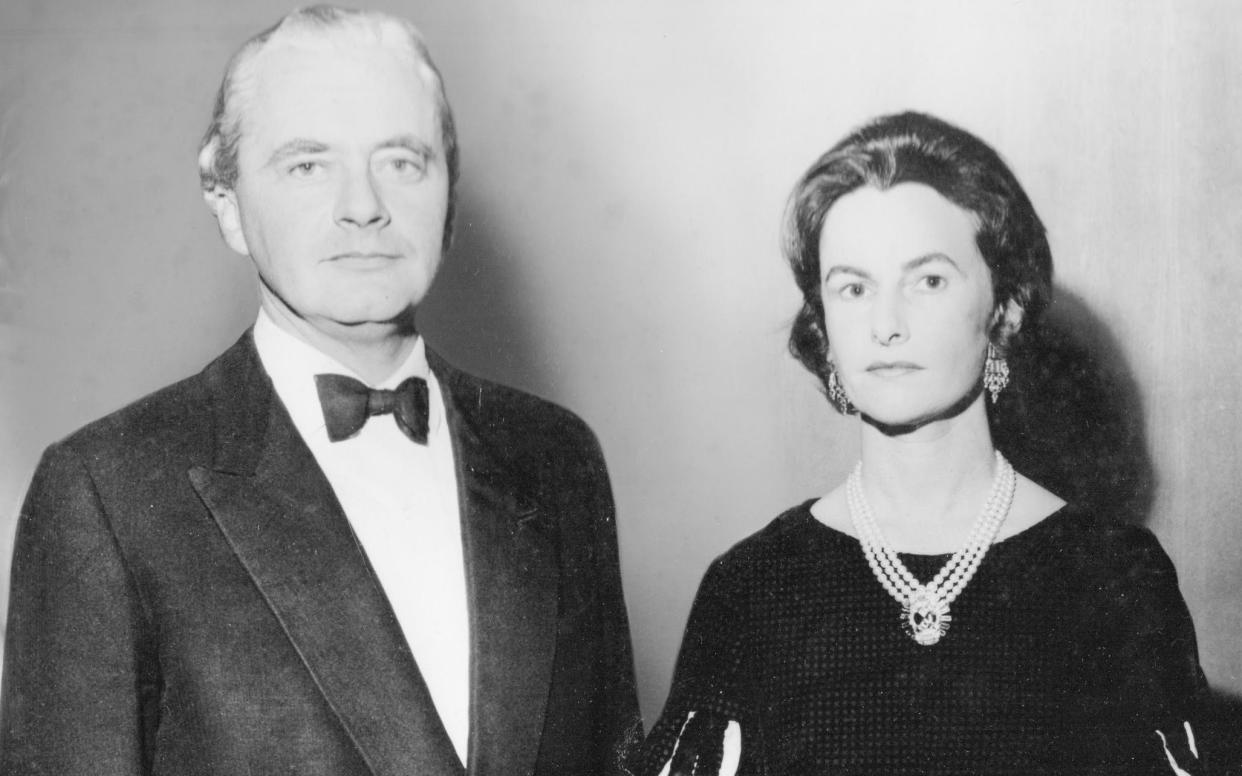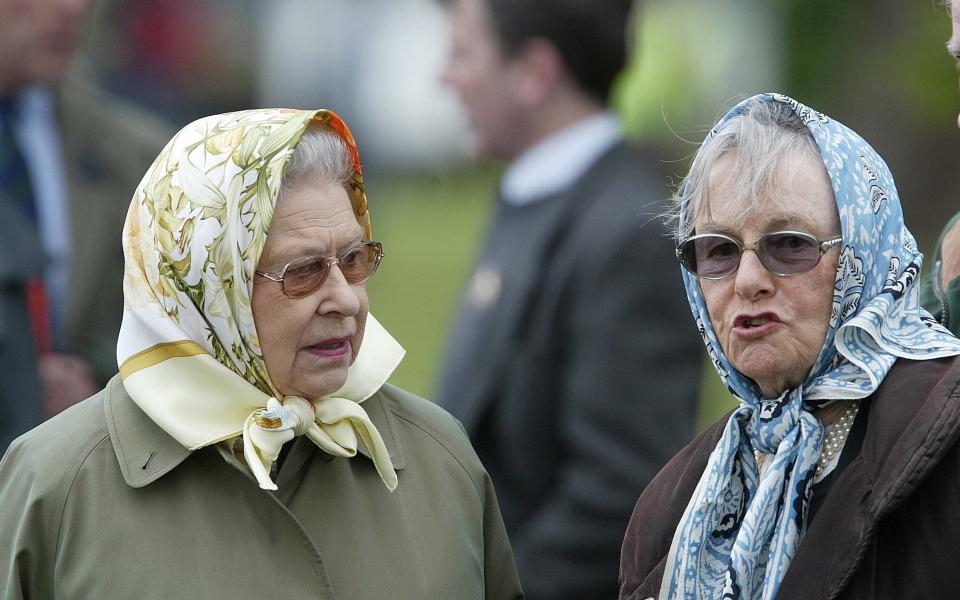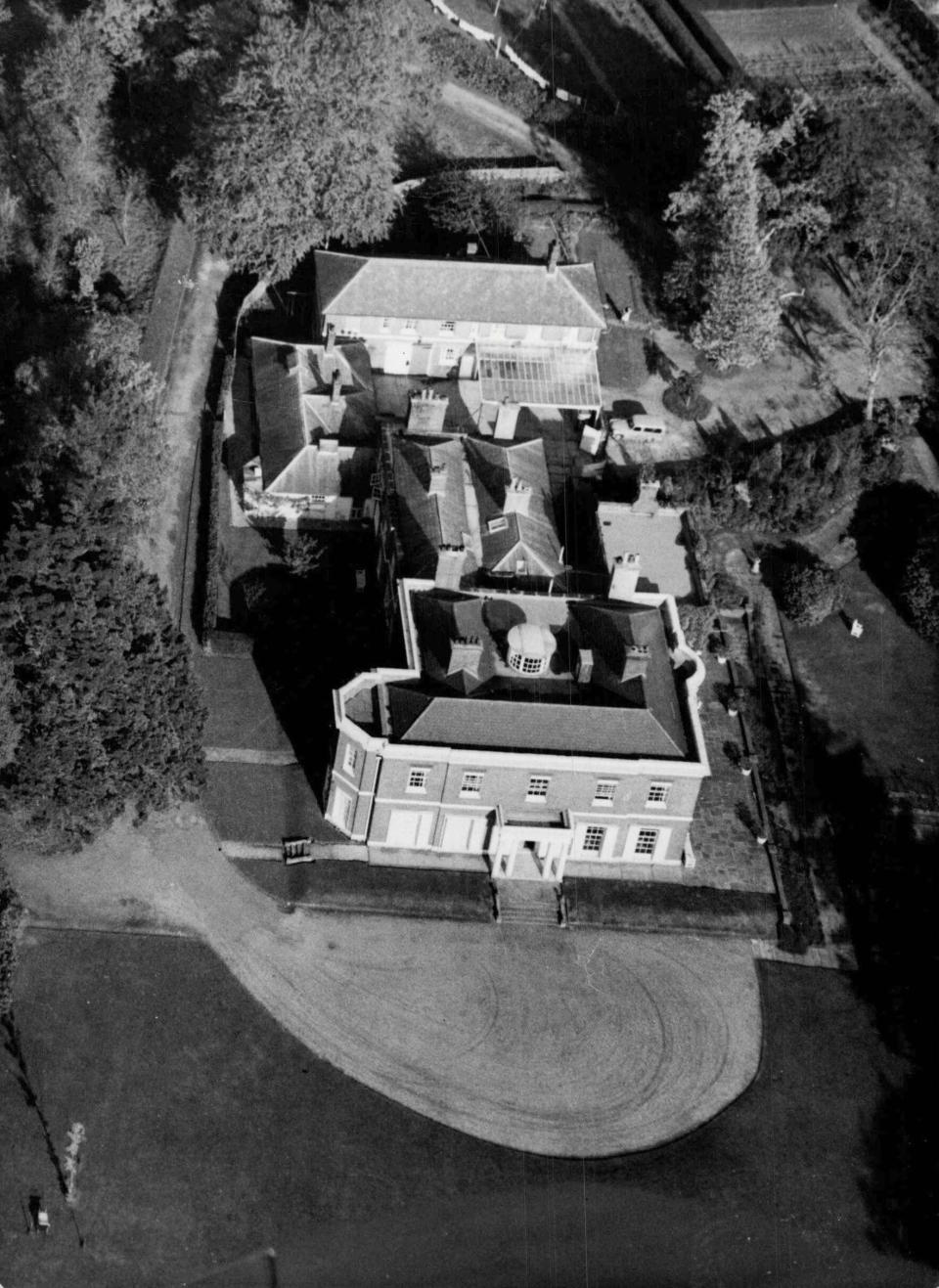Lady Rupert Nevill, faithful friend from childhood of Queen Elizabeth II – obituary

Lady Rupert Nevill, who has died aged 97, was a childhood friend of the late Queen Elizabeth II and remained an intimate of the Royal family for the best part of a century; her husband, Lord Rupert Nevill, was also close to the family, serving as treasurer and later private secretary to the Duke of Edinburgh.
It was said that the nearest the Queen could get to “popping in on a friend” was when she called on Lady Rupert Nevill, sometimes giving as little as 24 hours’ notice that she would be visiting her grace-and-favour apartment in St James’s.
“The Queen often phones Lady Rupert for a chat or to discuss a problem; they always exchange Christmas presents and the Queen likes to call her by her nickname, Micky,” a source once said, adding that Lady Rupert Nevill probably knew more royal secrets than any other “outsider”.
The Queen and the Duke of Edinburgh were frequent weekend visitors to the Nevills’ country home, Horsted Place, a magnificent Tudor revivalist house in East Sussex built in 1850 by George Myers for Francis Blanchard with detail by Augustus Pugin. It is conveniently close to Glyndebourne, where Lady Rupert Nevill, who enjoyed all the arts, was a stalwart of the opera company.
“There is probably no other house in England where the Royal family come nearest to being ordinary people,” a friend recalled. “There’s supreme loyalty and trust there,” another said. “The Nevills would lay down their lives for the Royal family. It’s as deep as that.”
Lady Rupert Nevill and her husband were sometimes referred to in royal circles as the “little people”, a term used not in a pejorative sense but rather because of their dainty stature. The couple were such seasoned courtiers that they were often brought in to jolly along otherwise awkward royal functions.
“Rupert and Micky had an extraordinary ability to put people at ease with the Queen,” a friend told The Times in a feature on royal intimates in 2012. “Poor things, though. They were deployed for some of the most deadly dull of events.”

Lady Anne Camilla Eveline Wallop, known as Camilla, was born on July 12 1925, the younger of two children of Gerard Wallop, the 9th Earl of Portsmouth (one of whose ancestors had married into Sir Isaac Newton’s family) and his American-born first wife, Mary Post; her parents divorced in 1936 and her father married Bridget Crohan, subsequently presenting Anne with two half-sisters and a half-brother.
She was nine months older than Princess Elizabeth and five years older than Princess Margaret. In 1937 she was one of 14 cousins and friends invited to join the young princesses at Buckingham Palace for a meeting with the leading Girl Guide Violet Synge. That led to the formation of the 1st Buckingham Palace Guides, using a summer house in the garden as their base. During the war the unit moved to Windsor Castle, by which time Elizabeth and “Micky” were firm friends.
During the early years of the war Camilla (Micky) had been living with her mother in London. One night their apartment was bombed out and the 15-year-old was impressed by their move into the Savoy Hotel, where they were cared for by her “unbelievably good looking” uncle Bob Post, a journalist with the New York Times. “An amazing number of rather fascinating people flowed through our table in the dining room. I think he had the trust of a great many people in the government,” she wrote.
In 1944, aged 19, she married Lord Rupert Nevill, the youngest son of the 4th Marquess of Abergavenny, at St George’s, Hanover Square. He was serving in the Life Guards with the unit providing a personal bodyguard for George VI. Later he was aide-de-camp to Lieutenant-General Sir Brian Horrocks during the Allied advance of 1945. From 1966 to 1977 he was chairman of the British Olympic Association and then president.
When Princess Elizabeth attended her first charity ball, in 1946, it was one arranged at the Dorchester Hotel by Lady Rupert Nevill for the King George’s Fund for Sailors. On that occasion the princess danced first with Lord Rupert Nevill and then with other members of the party.
A few years later the Nevills played a central role in the saga of Princess Margaret’s separation from Group Captain Peter Townsend. Once again they were close to all those involved, having hosted Townsend and his first wife Rosemary at Windsor in 1944.

A decade later the Nevills were living at Uckfield House, an 1820s country house in East Sussex, and Townsend was divorced and in love with Margaret. Yet for complicated reasons there were not able to marry, and in 1955 the Princess and Townsend spent their last weekend as a couple with the Nevills. It was there, in front of a burning fireplace, that the princess drafted her statement renouncing her attachment to the man she loved.
When Margaret married Antony Armstrong-Jones, later Earl of Snowdon, in 1960, the Nevills presented the newlyweds with a George I giltwood side table with marble top. It was placed in the drawing room of the Princess’s private apartment at Kensington Palace, and in 2006, four years after her death, sold at Christie’s for £10,800. Some years later, when Princess Anne was a pupil at Benenden in Kent, the Nevills’ house became her weekend home-from-home.
In 1965 Lord and Lady Rupert Nevill sold Uckfield, which was demolished in 1974 and replaced by a housing estate. They moved to nearby Horsted Place, which she put her heart and soul into restoring, calling on the acclaimed landscape architect Sir Geoffrey Jellicoe to redesign the four-acre grounds.
Some of the trees and shrubs came from their previous home, including a myrtle tree grown from a sprig from Queen Victoria’s wedding bouquet. Later, Lady Rupert Nevill opened the gardens to the public. It was not an easy step, but as she mused at the time, maintaining them had become impossibly expensive and she felt a responsibility to share them.
She was fond of Uckfield and the surrounding area. But when Julian Fellowes, a distant relation whom she otherwise rather liked, published his debut novel Snobs (2004) it featured a “Marchioness of Uckfield”, or Googie to her friends, who was clearly modelled on her, and she expressed her annoyance at the way she had been characterised.
Lady Rupert Nevill was patron or chairman of many charitable organisations in the area, including the National Trust’s Kent and East Sussex region. In February 1988, four months after the great storm had caused widespread devastation across the south of England, she welcomed the then Prince of Wales to Sheffield Park and Gardens, East Sussex, which he visited as patron of the Trust’s Trees and Gardens Storm Disaster Appeal.
Her husband died in 1982. Soon afterwards, Horsted Place was sold and converted into a hotel, while Lady Rupert Nevill moved to nearby Glynde. They had four children: Guy, who was Elizabeth II’s first godson and who died in 1993; Angela, who was a bridesmaid to Princess Margaret in 1960 and is an art dealer; Christopher, the 6th Marquess of Abergavenny; and Henrietta, who was a goddaughter of the Duke of Edinburgh.
Lady Rupert Nevill, born July 12 1925, died January 25 2023

 Yahoo Movies
Yahoo Movies 
